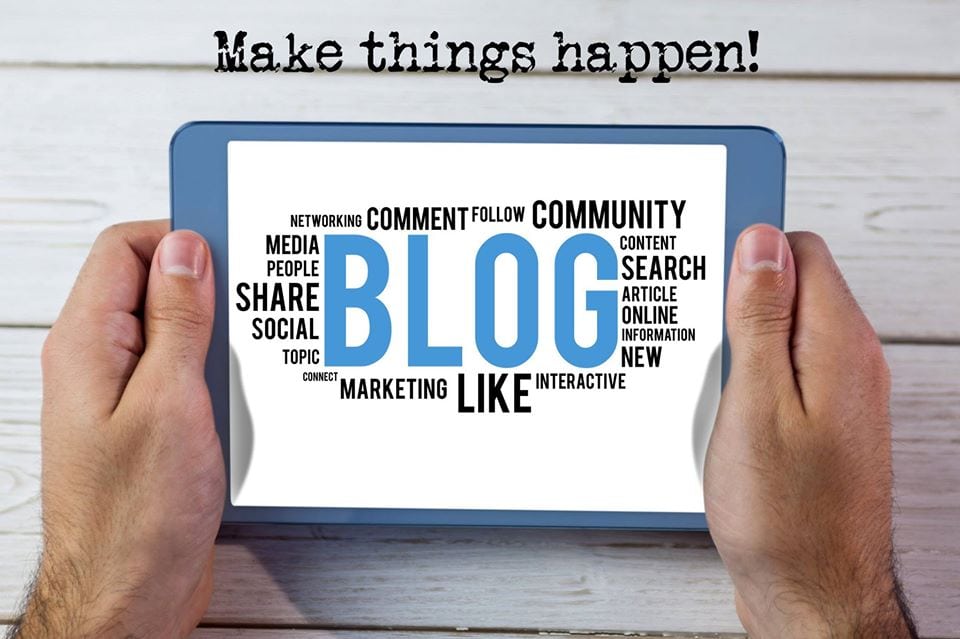5 Types of Inbound Marketing You Need for Ecommerce

Every eCommerce entrepreneur would love to get more new users/customers onto his eCommerce site.
Inbound marketing is all about bringing organic users, converting a viewer into your customer by keeping him interested in your product line, website and channeling him through the payment page.
There are different types of sources which can compel a viewer to your website and buy products, you have to use them correctly to hit the bull’s eye.
There are many techniques, which can have a different magnitude of impact on a viewer’s mind. Below are listed 5 types of eCommerce inbound marketing techniques that are definitely going to fetch sales.
Inbound Marketing for eCommerce
#1 Blogs, blogs, and blogs – eCommerce Inbound Marketing
Blogging has always been the key way to attract customers to your products.
You have to write about the products, its uses, where it can be used and how reviews and everything should be so beautiful structured that viewer should hit the buy button in seconds.
But if you’re an e-commerce website and looking for starting a blog, you should have a strategy, because writing straight up without any end result could be a waste of efforts. There are some key points you should note which could help you in successful blogging.
- Keep in mind the Buyer’s viewpoint, make a list that what would a buyer wants in your blog. Which topic would attract him more, and which products are in trend.
- Don’t just write, optimize your content for certain product keywords, that when a search is made, the buyer could direct towards your page and product. SEO is an important part of blogging, don’t forget that.
- Your blog shouldn’t be just product marketing, you should engage with the buyers, try to teach them few things, educate them so that they can know you care about their interests.
If you’re able to successfully follow these points, you’re definitely going to get buyers based on your blog.
#2 Guest Posts – eCommerce Inbound Marketing
Your blogs are going to fetch you customers, but guest posts also have a deep impact on viewers mind.
Suppose you want that product reviews should direct potential customers to the buying page of your e-commerce website.
In order to do that, you can write a guest post on famous websites, which can be helpful to fetch honest readers of that website and also make your product trustworthy.
Guest post directly increases the reputation of your product and store.
You can use websites, pay them, and link your product to the reviews, integrate your product in e-books of the niche, journals, or get recommended by a famous personality.
This creates a high-quality content, which can make an impact much deeper than blogs do. By doing this, you’re fetching consumers right from the core, which is great for your store.
#3 Free Guides
Guides can be helpful in making potential consumers understand what you’re selling, what trends are in the market and how your product relate to it.
See! Guides are great marketing if you successfully pull it off.
While making a guide, don’t just market your product into it, make it in a way, that educates the consumers, that make them realize the need of the product, that could connect with the situations, and make them choose your product.
For example, if you own a cloth store, you can e-mail guides featuring your new autumn collections, or a departmental store, making them realize the things you can buy in particular weather.
#4 Landing Pages – Inbound Marketing for eCommerce
There is nothing like getting organic traffic to your website, we know that guest posts, guides, and other marketing strategies are good, but directly landing them to your pages is worth more than anything.
Landing page is the first page of your website, to which customers directly land from a search engine.
Now, this part of inbound marketing is very critical because the customers land on the page purely based on keywords. Choosing keywords, and ranking your page up in search results take a lot of efforts. That’s why you should invest on an SEO section because, in today’s time, it has become really important.
There are mainly two types of landing pages:
- Click through pages: these are direct links which you click through search results or e-commerce funnels. The pages which direct you by clicking from one page to another are click through pages.
- Lead generation pages: These pages collects user data and then connect you to that data, and do marketing by the means of E-book, guides or contests.
#5 Social Media for eCommerce
 Considering the potential of social media, it is just so obvious that it could be transformed into biggest inbound marketing way.
Considering the potential of social media, it is just so obvious that it could be transformed into biggest inbound marketing way.
Social media directly makes your presence among the customers.
Customers want you to tell them about your product and see trends on the social media. And if you’re not there, you are missing a huge opportunity.
Making your presence on social media, creating pages, adding articles, posting regularly about offers and trends, new products and feedback, a social media page is a representation of your store to the people.
Start by making pages, hiring writers who can write engaging posts, link your pages to your blogs, cross-link to eCommerce stores, and see the magic.
If you’re promoting your page in social media, there are 60% chances of new people checking your page, would also check your website, and if you’re to convert just half of it, you’re going to get huge sales.
Platforms like Pinterest, Instagram and twitter can give you huge page views.
Pinterest has 10% more conversion rates than any other platforms. Similarly, Instagram gives you high page views. Twitter builds your brand reputation, and you can get customer feedbacks.
So it’s better to have pages on all platforms because they all have different ways of working.




